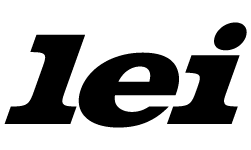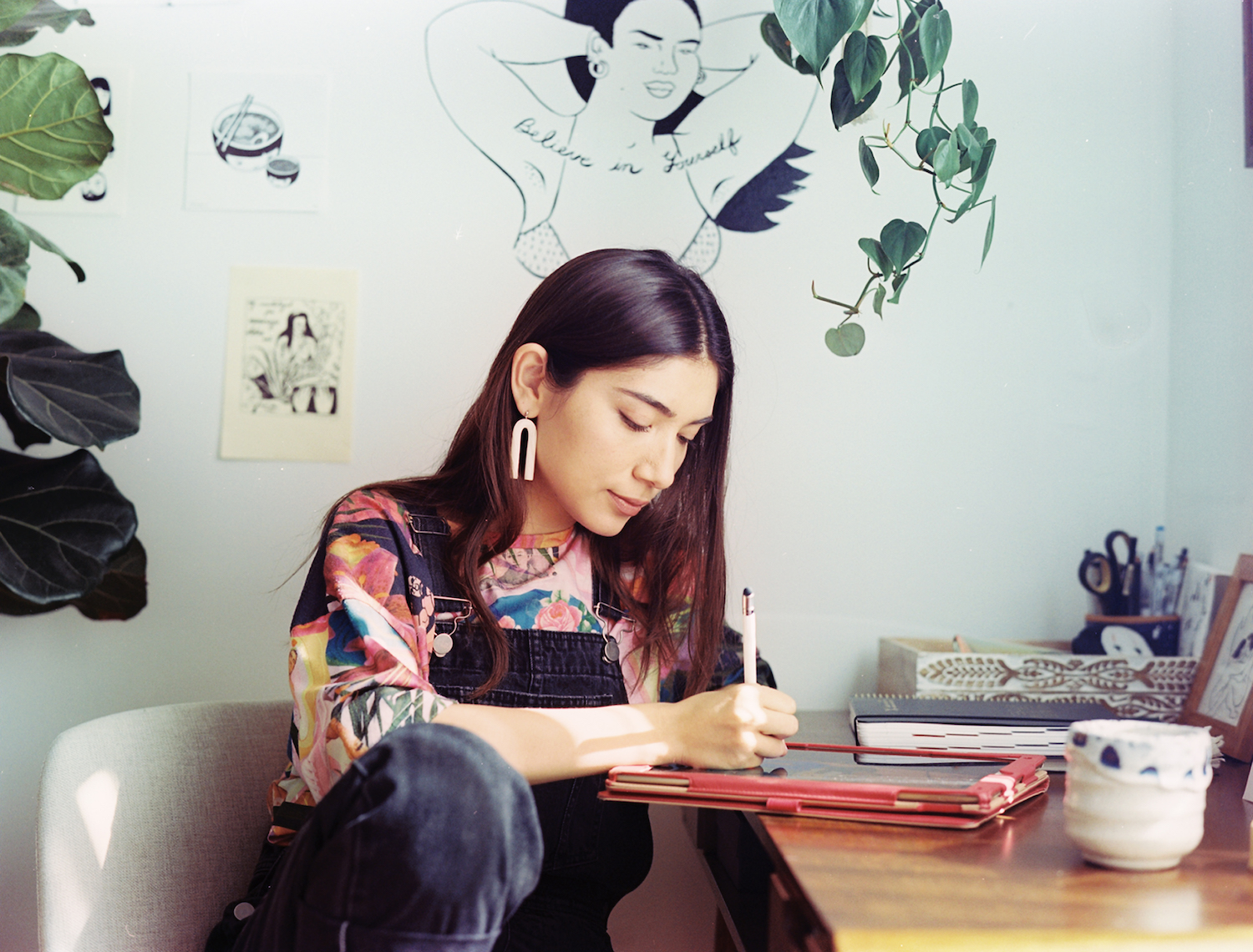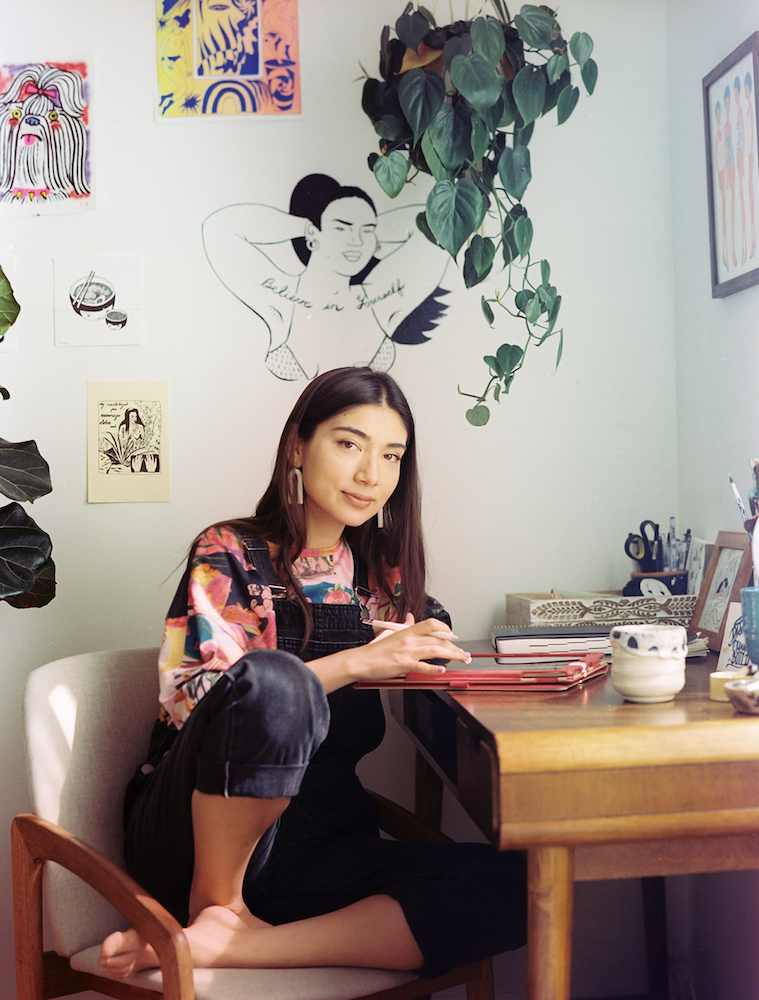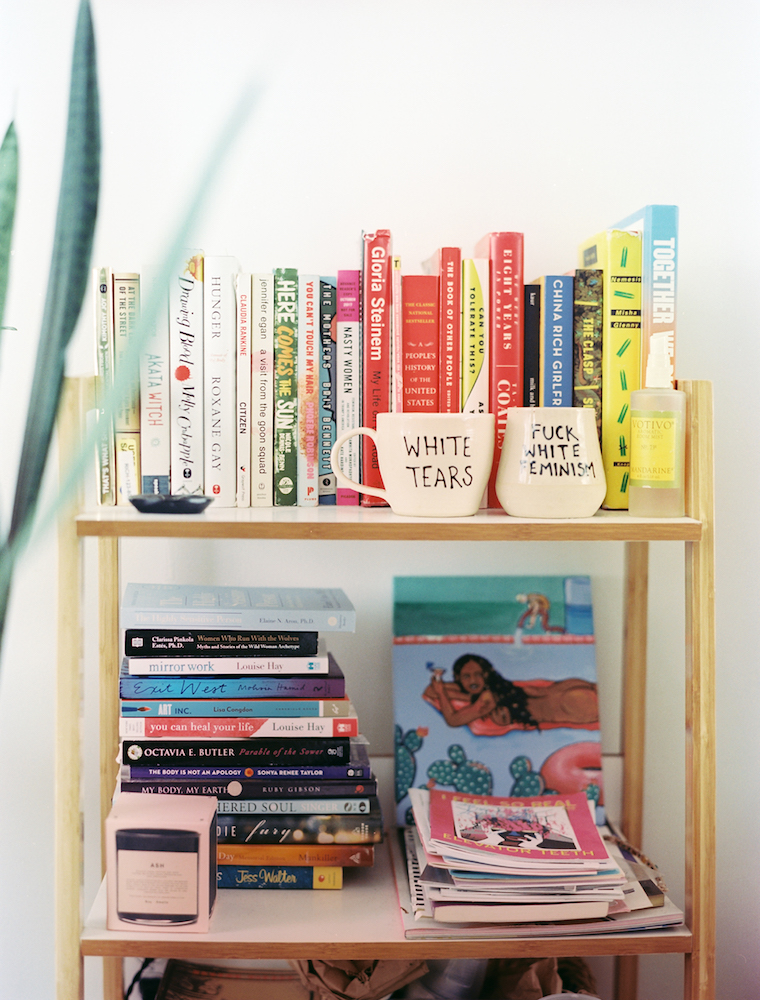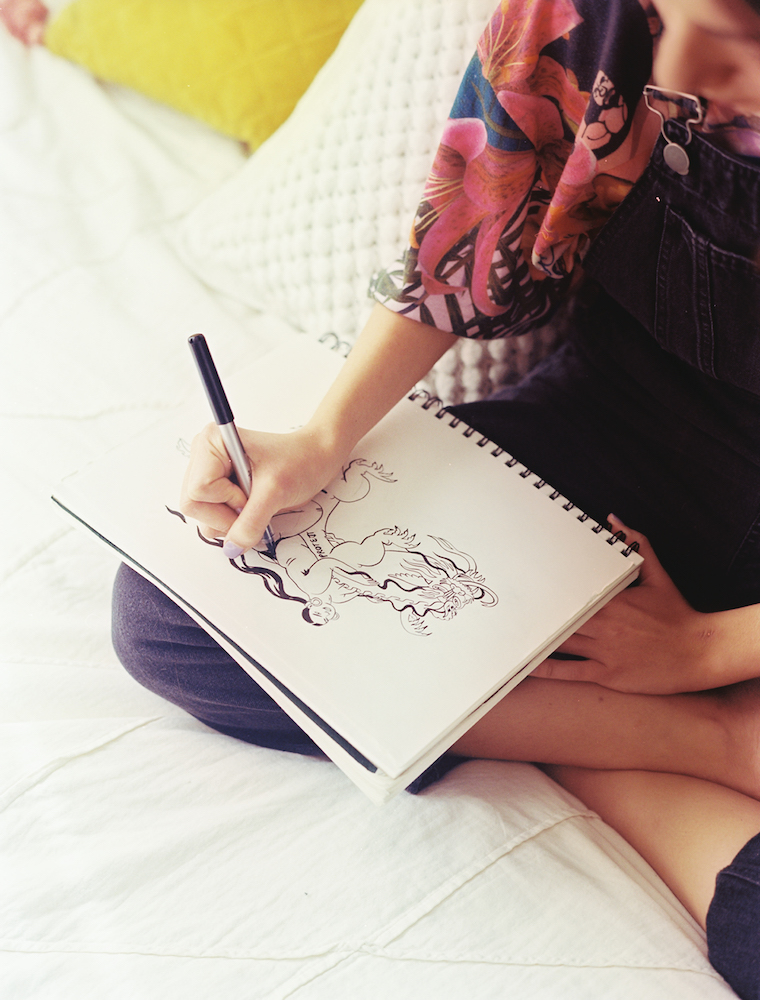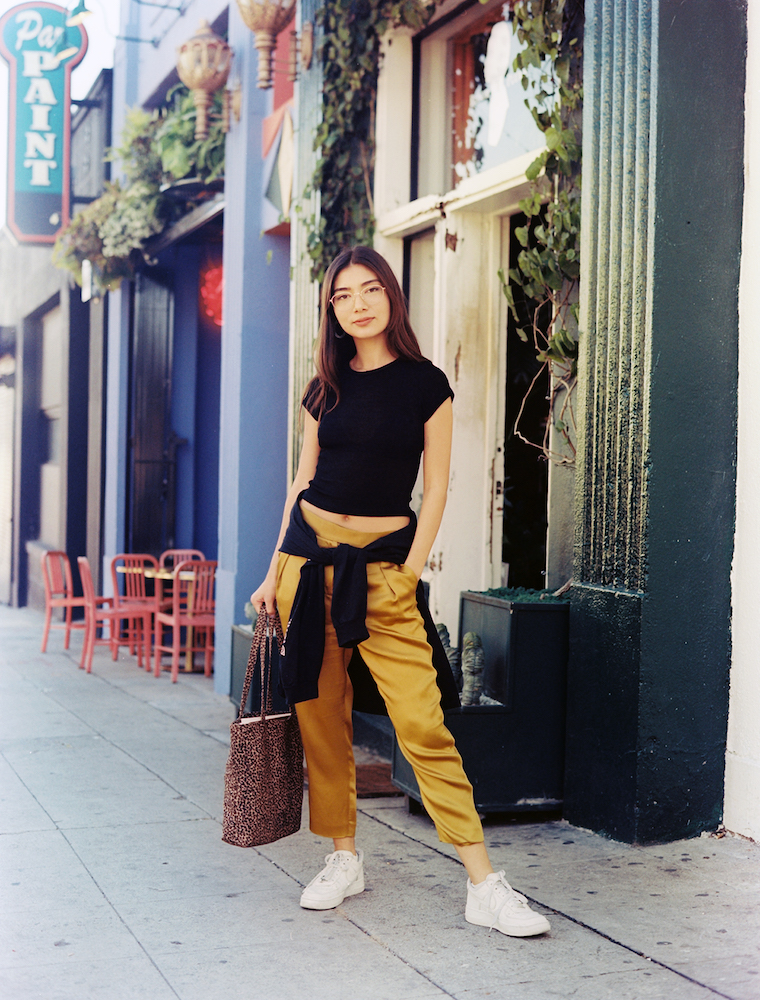For visual artist Ashley Lukashevsky, art doubles as a love letter to the community and a spirited call to action.
Text by Aja Toscano
Photos by Ja Tecson
Illustrations courtesy of Ashley Lukashevsky
The warm Los Angeles light dances across the drawing nook that serves as a makeshift studio space for Ashley Lukashevsky. This afternoon, she sits in front of her stylus, doodling away. Displayed above her are pieces by other women artists, many of whom have inspired Ashley’s own work. Among these works hangs one of her own featuring a radiating woman in a power stance with her hands behind her head and the words “Believe in Yourself.”
It’s a creed that speaks to Ashley’s quest as an illustrator and visual artist. She spells it out proudly on her Instagram bio: “Illustrating to dismantle patriarchal nonsense + systemic racism.”
Power of Art
For this Hawai‘i-born artist, systemic issues such as homelessness, poverty, and unemployment were realities she witnessed while growing up in Honolulu. She always knew that she wanted to create an impact in her community, but expressing her voice through illustration wasn’t always her vision.
While attending University of Southern California, Ashley studied international relations and political science. Back then, she was convinced that pursuing a “serious” career was the only way to create the change that she hoped to achieve.
“I didn’t understand the power that art has to shape change at the time,” Ashley says. “I thought I had to do research or writing in order to create change.”
During her last semester at USC, Ashley decided to take an elective course in graphic design and found that design came naturally to her.
I didn’t understand the power that art has to shape change at the time. I thought I had to do research or writing in order to create change.
After graduating, she worked as a graphic designer for a start-up company for a year. Commissions done on her own time were what kept her excited. In 2017, Ashley decided to break free from the mundane and became a freelance illustrator.
Since then, she has been creating works that critique and comment on societal issues, encouraging discourse among her active community of supporters both online and off.
“I want my art to feel affirmative to people of all identities, specifically to queer and trans people of color,” Ashley says.
Ashley’s works are easy to spot; they feature queer, full-figured, ethnic women who evoke power and poise within the same pen stroke.
Though these women are two-dimensional, it’s easy to see that each of them are comfortable in their illustrated skin. Whether they’re drawn in a power stance or in a calm state of self-care, each subject portrays a specific emotion that viewers relate to.
You May Also Like:
Exploring Girls on Film with Photographers Ramsey Cheng and Sam Feyen
What ties each piece together are the dynamic words and voices that these works aim to represent. Ashley’s project in collaboration with Planned Parenthood of New York illustrated a variety of topics from sexuality to self care paired with catchphrases. “Whenever I get to work with an organization or a company that is asking me to create something that really resonates with me, that’s my favorite project,” Ashley says.
I want my art to feel affirmative to people of all identities, specifically to queer and trans people of color.
Ashley shares her artwork on Instagram, and thousands of fans have reposted her illustrations. Her work even resonates with celebrities. During the 2018 election, Ariana Grande shared Ashley’s post encouraging people to vote with intersectionality in mind to her 148 million Instagram followers.
I caught Ashley for a FaceTime call while she was between projects. We talked about home, her community, her recent vibrator collaboration, and more.
How did home (Honolulu) influence your work?
I think my work is impacted by where I grew up in ways that I don’t even notice. My work is really colorful and has a lot of botanical, beautiful plants and flowers because that was the environment that I grew up in. There’s also something really nostalgic and comforting about that. I miss that a lot in LA. because I feel like everything here is so dry. People are like, “Do you wanna go on a hike?” and I’m like, “No, it’s just dirt.” I miss the landscape of home. And the people in my art are typically always people of color because that’s who I grew up around. And I think that I also miss that. Being in such white circles when I went to college, now I’m wanting to fully embrace diversity and the multicultural communities that I grew up in.
The people in my art are typically always people of color because that’s who I grew up around.
How do you support your local LGBTQ community in LA?
I have done work for organizations that serve all kinds of populations. I did a limited-edition print run of my “SISTERS NOT CIS-TERS” print. I sold them and donated 100% of the proceeds to the TransLatin@ Coalition. That organization is really incredible, and they work with a lot of trans people in Los Angeles. And it’s led by Bamby Salcedo, who I’m a huge fan of! I also do most of my pro bono work for immigration-related issues, which is definitely something that impacts LGBTQ people. A lot of the immigrants at the border who are trying to have a safer life are often running from persecution based on their sexual identity or gender identity.
When you’re working at your favorite coffee shop, do people ever come up to you or peek over and ask about your work?
Honestly, that’s one of my biggest pet peeves (laughs). The things I draw often have nudity and different topics, sexual things. This happened a few weeks ago! I was drawing two nude women and it read “LOVE THY SELF.” It was very sensual, and this older white man sitting next to me was just like “Oh, I like that,” and I was just so uncomfortable, and kept having to do other things so he wouldn’t keep looking.
Speaking of sensuality, I saw your recent collaboration with the Le Wand Massager for International Women’s Day. What a fun project!
Yes! That was really cool because my pattern is all over the vibrator and they have this illustration of me on the back of the box. And I was like, “All these people have to think about me every time they pull out their vibrator!”
What’s your dream art commission or collaboration?
I think that my dream art collaboration would be something surrounding public art, working in collaboration with a community to create a visual manifestation of their dreams. I think that we all need something physical, a picture to aim towards. With everything happening right now, it’s easy to feel disengaged or hopeless. We need to be able to continue to dream, and that’s a really big role that art plays. To create public art is so powerful. And it would be amazing to see the way people interact with art in that space, instead of just online where my work usually is.
We need to be able to continue to dream, and that’s a really big role that art plays.
Is it cooler seeing your work online or offline?
Definitely offline. My work is on billboards right now sponsored by Why We Rise, an ongoing project of the Los Angeles County Department of Mental Health. I see it often online but rarely see it in person. Sometimes I’ll be driving or in an Uber, and I see a billboard of my work—and it’s giant—I get really excited!
Your Uber driver is looking at you in the rear view mirror like “Uhh…”
And I’ll be like “That’s mine! I made that!” The first time I saw it at LAX I was really excited because it’s on a rotating screen. I would just stand next to it and wait for it to come on again so I could take a picture (laughs).
What do you hope your illustrations will create for others?
I hope that my work, at the very least, gives someone a glimmer of hope that they’re not alone, and that they’re cared for and have community wherever they are.
